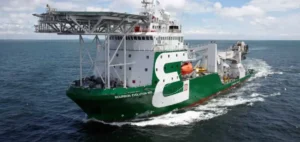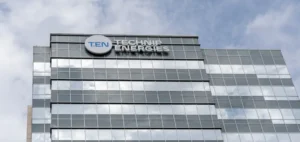Baker Hughes and Borg CO2 sign a memorandum of understanding to capture and store CO2 emissions from an industrial cluster.
The two companies aim to eliminate 90% of the emissions from the various sites, located in Norway.
Baker Hughes to store 630,000 tCO2/year
The project, run jointly by Baker Hughes and Borg CO2, aims to capture and store carbon dioxide emissions from an industrial cluster.
Up to 630,000 tonnes ofCO2 emissions will be captured and stored each year.
The memorandum of understanding covers a decarbonation hub for several industrial sites in the Viken region of Norway.
The project involves industrial facilities in the towns of Fredrikstad, Sarpborg and Halden.
This cluster is responsible for around 700,000 tonnes of CO2 emissions per year.
The two companies are committed to improving plans for CO2 capture, liquefaction, transport and storage at these various sites.
The aim is to store 90% of the emissions from the sites concerned.
Feasibility study underway in 2021
An initial feasibility study has been carried out, and the companies are now working on an extended study, to be completed by the end of 2021.
Baker Hughes and Borg CO2 will evaluate the optimal structure for implementing the project.
The companies are also looking into the possibility of subsidies and incentives at national and European level.
Borg CO2 specifies the protocol: capture, liquefaction, transport and storage under the North Sea seabed.
For the last two stages, the company announced last April that it had placed its trust in Northern Lights JV.
A competent technology portfolio
The energy technology company sees this project as an opportunity to implement its extensive portfolio of technologies.
These include carbon capture, utilization and storage (CCUS), chilled ammonia and compact carbon capture processes.
In short, Baker Hughes will use its engineering services to study and develop the platform.
The CCCUS portfolio also includes state-of-the-art turbomachinery and advanced solvent-based capture processes.
But also the construction and management of wells for CO2 storage and digital monitoring solutions.
With a long-standing presence in Norway, the company has six sites in the country, employing 2,000 people.
CCUS technology to meet international targets
For Rod Christie, Executive Vice President of Turbomachinery & Process Solutions at Baker Hughes, this technology is essential for the future:
“Today, industrial clusters account for around 20% ofCO2 emissions in Europe. Significant decarbonization is not possible without carbon capture, utilization and storage.”
The project to capture and store CO2 emissions from the sites concerned is in line with climate objectives on several levels.
Firstly, it contributes to achieving Norway’s national emission reduction targets.
It also contributes to the objectives of COP 21 and the UN’s Sustainable Development Goals.






















